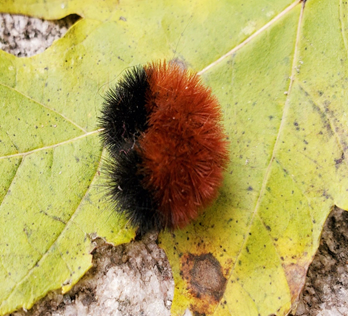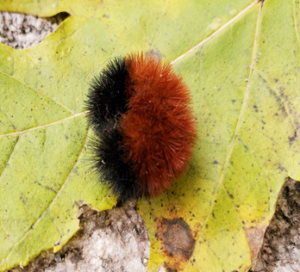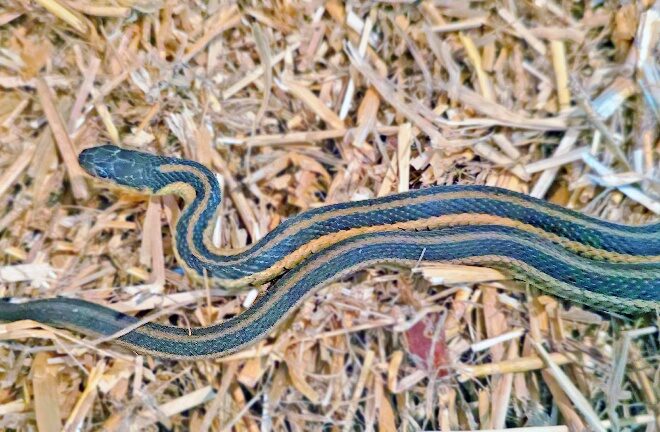
Rural Perspectives: The woolly bear caterpillar and the weather

as it wanders to find a place with protective cover to
spend the winter. Photo credit Diane Constable
by Diane Constable
Will 2022 have a short and mild winter?
Who among us has seen the woolly bear caterpillar and not wondered if it really does predict the harshness of the upcoming season?
In early spring, the overwintering woolly bear caterpillar will come out of hibernation and form a cocoon. In two weeks, it emerges as the 2-inch buff-yellow Isabella tiger moth (Pyrrharctia isabella).
This native moth will lay up to 1,000 eggs. Like most moths, they sip on flower nectar and are more active at night when they can be seen flying around outdoor lights.
The eggs will mature to adults in about two months and they lay a second batch in mid-summer. The larvae do little damage and eat a wide variety of leaf plants including clovers, dandelions and sometimes tree leaves.
It is the caterpillars of this second batch that we see in the late fall when they wander looking for leaf debris and other protective cover to spend the coming cold season.
Folklore says that the width of the brown bands of this native predicts the severity of the upcoming season —the wider the brown band, the milder the winter.
But this is more of a record of a mild fall. A warmer autumn will produce wider brown bands because the brown part continues growing until the woolly bear goes into a hibernation for the winter.
Fun Fact: The woolly bear is one of the very few moths that overwinter as a caterpillar by freezing solid. It produces a sort of antifreeze that protects it until spring.
Bonus Fun Fact: There are five states that have Woolly Bear Festivals — Kentucky, New York, North Carolina, Ohio and Pennsylvania.




